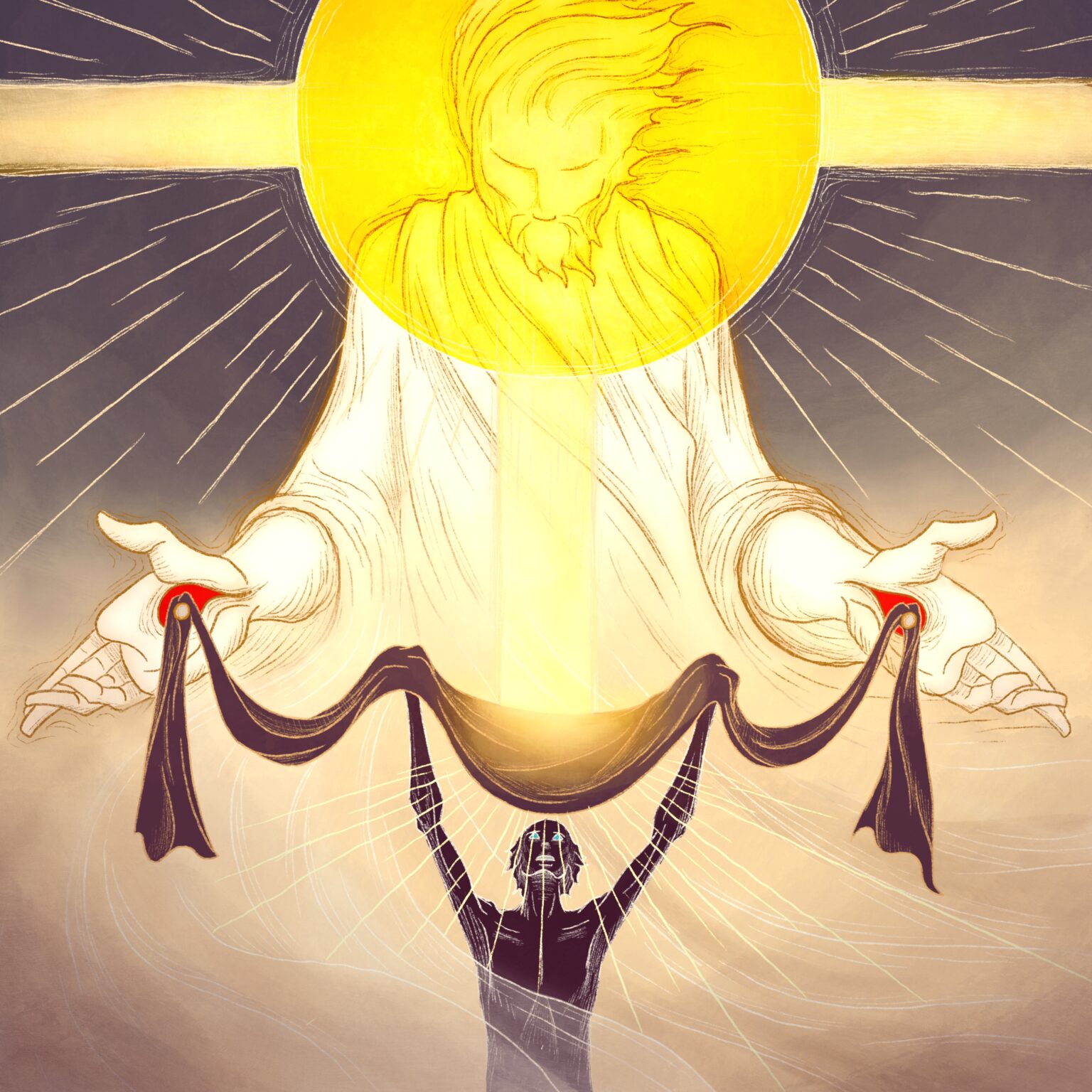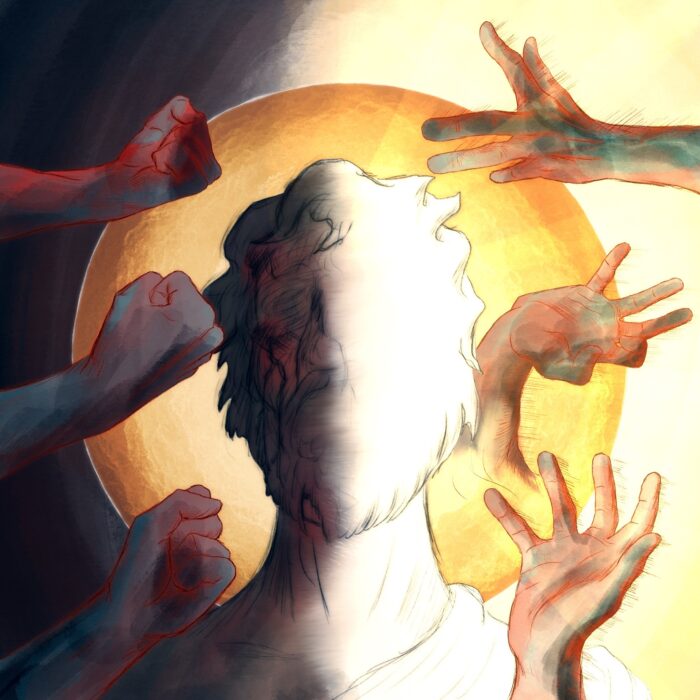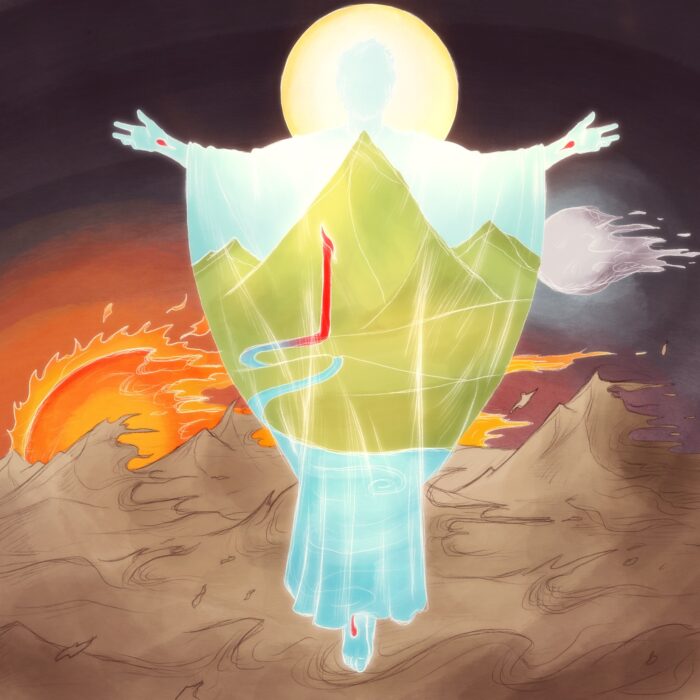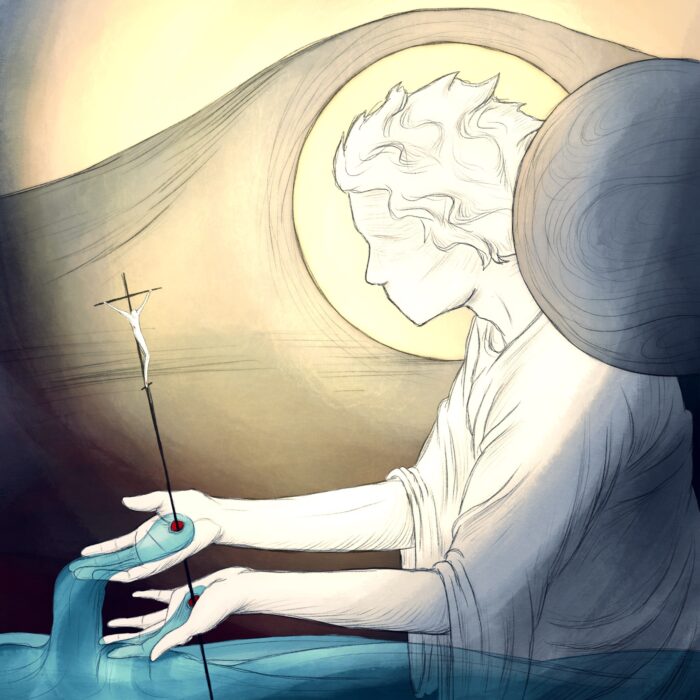Isaiah 37:14, ‘Hezekiah received the letter from the hand of the messengers, and read it; and Hezekiah went up to the house of YHWH, and spread it before YHWH.’
The Text Considered
The letter that Hezekiah receives here is a message from the king of Assyria saying that YHWH is unable to save His people and that the Assyrians will soon come and demolish Jerusalem. In other words, the letter is a threat from a power far beyond Hezekiah’s capacity, and a threat not merely to his survival, but to his faith as well. His response to this overwhelming assault on his faith always stands out to me: he runs to the temple of the Lord, spreads out the letter before Him, and confesses the truth about who YHWH is (v.15ff).
So too for us. However, where is the Temple today? Ultimately, it is in the person of the crucified and risen Jesus Christ who, as the eschatological dwelling place of God, IS the reality upon which and to whom the Temple points (Jn.2:20-22, Rev.21:22). And how do we run to Him? By His Spirit who unites us to Him in one Body, in the Scriptures which speak of Him in every line, and through other believers, in whom the Spirit dwells and who are, in that sense, Christ’s own ‘incarnate’ presence with us.
We, like Hezekiah, then, run into THIS temple, run into the presence of the Risen Jesus Christ who was Crucified, and there we spread before Him the ‘letter’ of our trouble. What freedom there is here! Hezekiah does not come with a plan, he does not come with a strategy to share with the Lord, he does not come with a polished theological perspective to impress the Lord…rather, he comes in the raw intensity and immediate uncertainty of the moment, he takes the letter—in all of its ugliness and terror—and lifts it up before the eyes of YHWH, knowing—even through the hailstorm of his hardship—that only THIS ONE can help.
The Picture Described
So, in this picture, the saint lifts the black parchment of his suffering (whatever it may be) up before the eyes of the anastasiform Christ, the Temple of God. Notice a few things:
First, the scroll is held in the hands of the Lord since even the darkest trials of His people are authored by His sovereign and loving hands.
Second, Christ not only holds the scroll of hardship as its author, but the scroll is nailed into His hands, representing the fact that He has already endured on the cross every trial that He ordains for His people. When we enter the temple of the presence of God in Christ with the scroll of our sufferings we find—wonder of wonders—that the one enthroned in glory as Lord has endured this very hardship in love and has seen it through into glory.
Third, and building off the second, the glory shining from the face of the Lord is in the form of the cross, re-affirming that the radiant identity of the one to whom we bring our sufferings is precisely the identity revealed in His bearing of these sufferings in our place, and His securing through these sufferings our redemption into fellowship with Him.
Lastly, see that the radiance of the Lord’s face shines through the black parchment of the suffering and scatters light on the face of the saint. Because God in Christ has suffered all our sufferings in love and transfigured them eschatologically into the beauty of His Name, those same sufferings experienced here-and-now may—by faith—become unique contexts through which the glory of God shines upon us from the face of the crucified and risen One, transfiguring the cross of our suffering (upon which He hangs with us) into the throne of His glory (upon which we sit with Him), and the table of fellowship prepared in the presence of our enemies (at which He both presides as Host and is presented as Feast).




